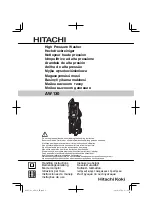
SOI/DT 2007-11 dmm
6/14
599 70 40-15
4 DRYING
CIRCUIT
1. Fan
2. Electric
fan
3. Casing and heating element
4. Duct
5. Bellow
seal
6. Coupling between tub and
condenser
7. Condenser
8. Solenoid
valve
9. Condensation intake tube and vapour
outlet
10. Tube between solenoid valve and air
break
11. Coupling (Air-break)
12. Filter body
13. Drain pump
The drying system is based on the principle of forced air with condensation by water jet. The drying
capacity is equal to about half the maximum load of dry washing. Therefore, when a full load is washed,
two drying cycles will be necessary. If a half load is washed, however, drying may be carried out
automatically at the end of the washing cycle.
During the drying phase, the drum rotates in alternate directions at low speed.
The fan ducts the heated air from the heating elements into the tub, which removes the humidity from the
washing.
The jet of cold water, coming into contact with the humid air, generates a heat exchange which condenses
the humidity. Cold, dry air is ducted to the fan and then again heated by the heating elements and re-
circulated inside the drum.
The cooling water and the condensation are expelled by the drain pump.
During the final minutes of the drying cycle, the heating elements switch off, but the fan continues to
function in order to complete the drying phase.
































